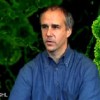Archive for October, 2009

Eugenics Archive Extremes
Oct 8th
The Nobel announcements always get people buzzing here at CSHL. This week was particularly exciting because Carol Greider, one of the Physiology or Medicine winners, graced the Lab campus for some years. As another example of science leaked into the mainstream, I learned about a NOVA dramatization on Charles Darwin, as well as a theatrical movie that initially didn’t make it to the US due to its controversial inclusion of the creationism debate.
As someone who only has one foot in this science world, I’ve wondered how those outside it look on at the celebrations and science story telling. Do they More >

Ribosome Discoveries Recognized in 2009 Nobel Prize in Chemistry
Oct 7th
The 2009 Nobel Prize in Chemistry will be shared between Venkatraman Ramakrishnan, Thomas A. Steitz and Ada E. Yonath for discovering how ribosomes function at the atomic level.
Ribosomes are molecular machines composed of RNA and protein that perform the critical function of translating messenger RNA (mRNA) into protein. In other words, they transform the genetic code from a static list of instructions into dynamic entities that constitute life. As the Nobel Foundation’s announcement eloquently put it, “they build and control life at the chemical level.”
In a tour-de-force of atomic chemistry, Ramakrishnan, Steitz, and Yonath used X-ray crystallography to locate each More >

2009 Nobel Prize in Physics goes to Kao, Smith and Boyle
Oct 6th
Telecommunications were the subject of the 2009 Nobel Prize in Physics. This year’s award will be split between two discoveries that have had a broad impact on contemporary life – fiber optics and charge-coupled device (CCD) technology.
Charles Kuen Kao will receive half the Prize for laying the foundations of the modern fiber optic industry. In 1966, he calculated how to transmit light signals over long distances using glass fibers. To that point, traditional materials had only been capable of transmitting signals over short distances (i.e. 50 feet). Kao’s discovery demonstrated how to send signals over many miles. Four years later, More >

Defining the Enemy, Advances in Autsim Research
Oct 5th
For most people the ideas of genes and traits recall a few scattered facts from their primary schooling on Mendel and his pea plants; short ones, tall ones, Punnett squares and the like. When it comes it comes to simple traits, like eye color, people may think that it is only a matter of some combination of dominant or recessive genes, i.e. BB, Bb, or bb. As it turns out, eye color is more genetically complex than this. So one could imagine that solving the genetic mysteries behind autism are even more complex.
In a recent review of autism research, Brent More >

Blackburn, Greider and Szostak share Nobel for Telomeres
Oct 5th
Nobel Prize week kicked-off today with the announcement of the Prize in Physiology or Medicine. As predicted on these pages, Elizabeth Blackburn, Carol Greider, and Jack Szostak shared the award for discovering telomeres and telomerase. This is particularly good news for Cold Spring Harbor Laboratory, which was home to Carol Greider when she made the pivotal discovery of isolating the RNA gene that encodes for the telomeric template.
Carol Greider isolated the Telomeric Gene while at Cold Spring Harbor Lab
What is a Telomere? A telomere is a region (or cap) of repetitive DNA at the end of every chromosome that basically More >

Countdown to the 2009 Nobel Prizes…
Oct 1st
Nobel Prize week will kick-off on Monday (October 5th) with the announcement of the Prize in Physiology or Medicine. The prizes for Physics and Chemistry will follow on successive days, as the science world is treated to its annual brush with celebrity. Unlike the Oscars, however, we do not know the list of nominees and the whole election process is rather secretive. Deprived as we are of a list of formal candidates, I think it best to resort to wild speculation, conjecture, and rumor.
Physiology and Medicine…
The main contenders: Elizabeth Blackburn, Carol Greider, and (possibly) Jack Szostak The discovery: Telomeres and telomerase More >
